Praying Mantises are awesome.
Also known as Praying Mantids, they are some of the most beneficial insects you can have in a garden, especially if you don't use chemicals to control bugs and pests (like me)! They are stealthy hunters and will gladly consume as many of your garden pests as they can including: aphids, beetles, caterpillars, crickets, flies, grasshoppers, grubs, leaf hoppers, and moths.
There are about 20 different Mantis species in the US and about 2,000 world wide. They have large, triangular heads and humungous eyes. As such, they have excellent eyesight and can see up to 50 feet away. Their heads are also able to turn 180 degrees giving them a real advantage in spotting potential prey.
Don't they look like crazy little aliens?
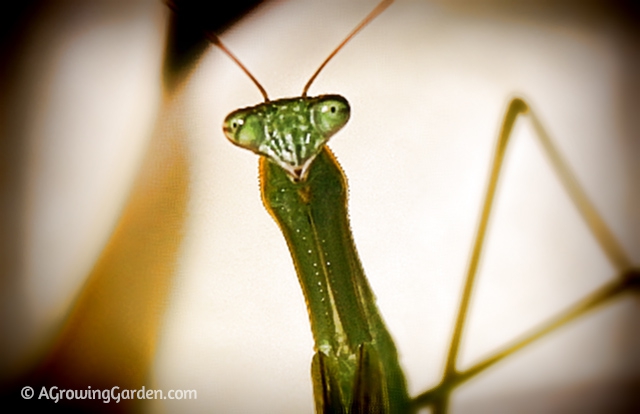
The life cycle of a Praying Mantis lasts for just one year—they hatch in spring, mature throughout the summer, and die when the cold weather comes. In the fall, females deposit their eggs on branches, rocks or other structures to overwinter.
If you do any trimming of hedges or bushes in the fall, be sure to check for praying mantis egg cases. If you find any on the branches you have trimmed, place the branch with the egg case in the crotch of a nearby bush or tree for safekeeping until the spring.
We are lucky to have tons of Praying Mantises each year and regularly find Praying Mantis egg cases all around our property. Believe it or not, if you don't have Praying Mantids in your yard or garden, you can purchase egg cases from some nurseries and garden centers. You can even buy them on Amazon.com (Praying Mantis Egg Cases for Sale @ Amazon.com).
Here is a photo of a praying mantis egg case in our yard.
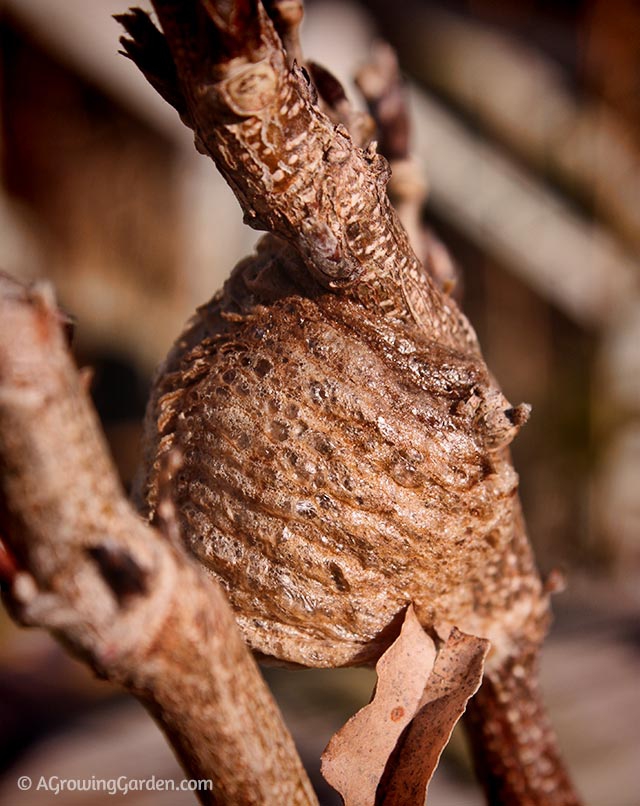
How Praying Mantises Hunt
Praying Mantises are patient, calculating predators. They will lie in wait for their prey and when close enough, snap it up with a lightning fast movement of their legs. In fact, Praying Mantises are just about the only predator that is fast enough to catch flies and mosquitoes too.
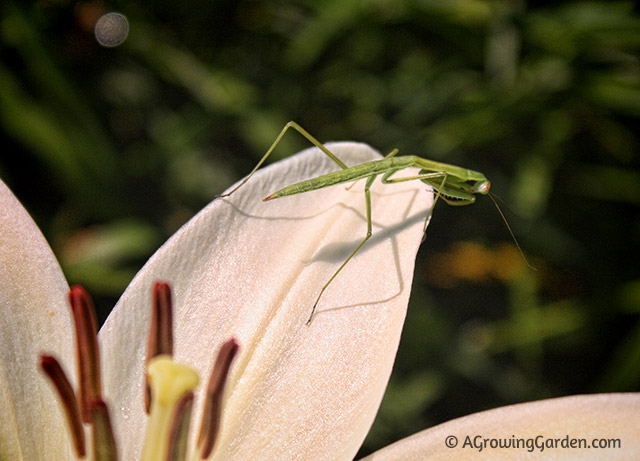
Once caught by a Praying Mantis, there is little hope for the victim. Their grip is powerful and their forelegs have serrated, spiny edges that end with sharp hooks. That's got to hurt!
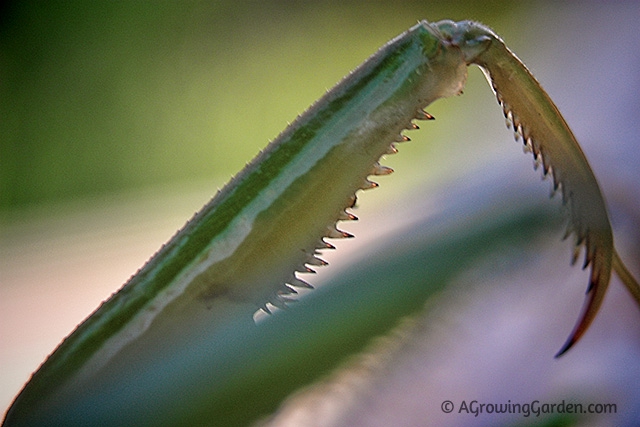
Adding to their 'stealthiness', Praying Mantises blend in very well in the garden. They are usually brown or green in color and when stalking their prey will stand still or walk very slowly, sometimes swaying back and forth to mimic a branch blowing in the wind. I imagine the other insects don't even notice them until it is far, far too late.
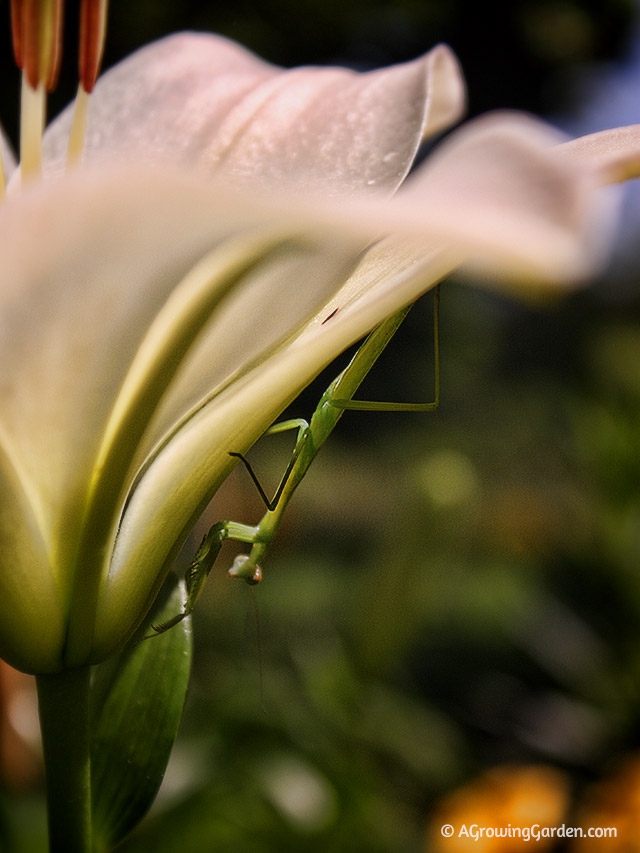
It is important to note that Praying Mantises are not particular in what they eat and, although they will gladly eat your garden pests, they also may eat the beneficial insects. Be warned ... it can be a tradeoff. Praying Mantises have huge appetites and will eat whatever they can.
I am personally always glad to see Praying Mantises in our garden. We have a hard enough time trying to control bugs and pests ourselves, so we are glad for any help we can get!
And, how can you not just be completely fascinated by these crazy looking creatures??
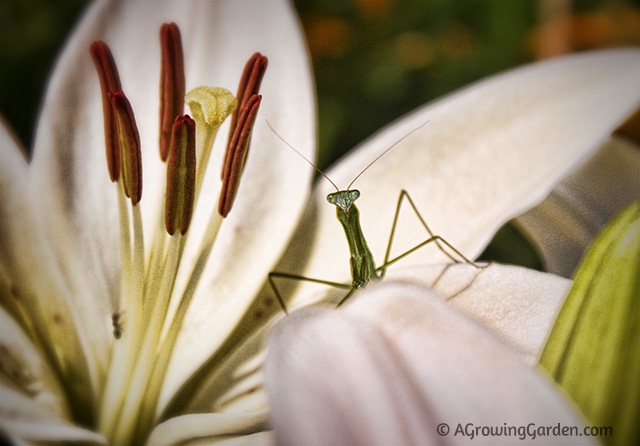





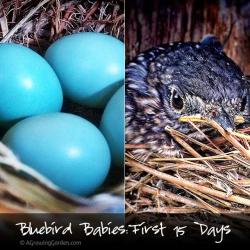

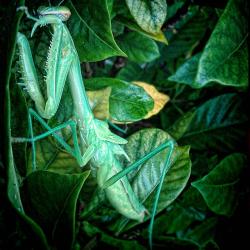
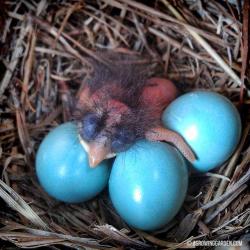



Join the Conversation!
June 17, 2013
I also welcome praying mantis in my garden. They can be a huge help in controlling aphids and moths.
Reply